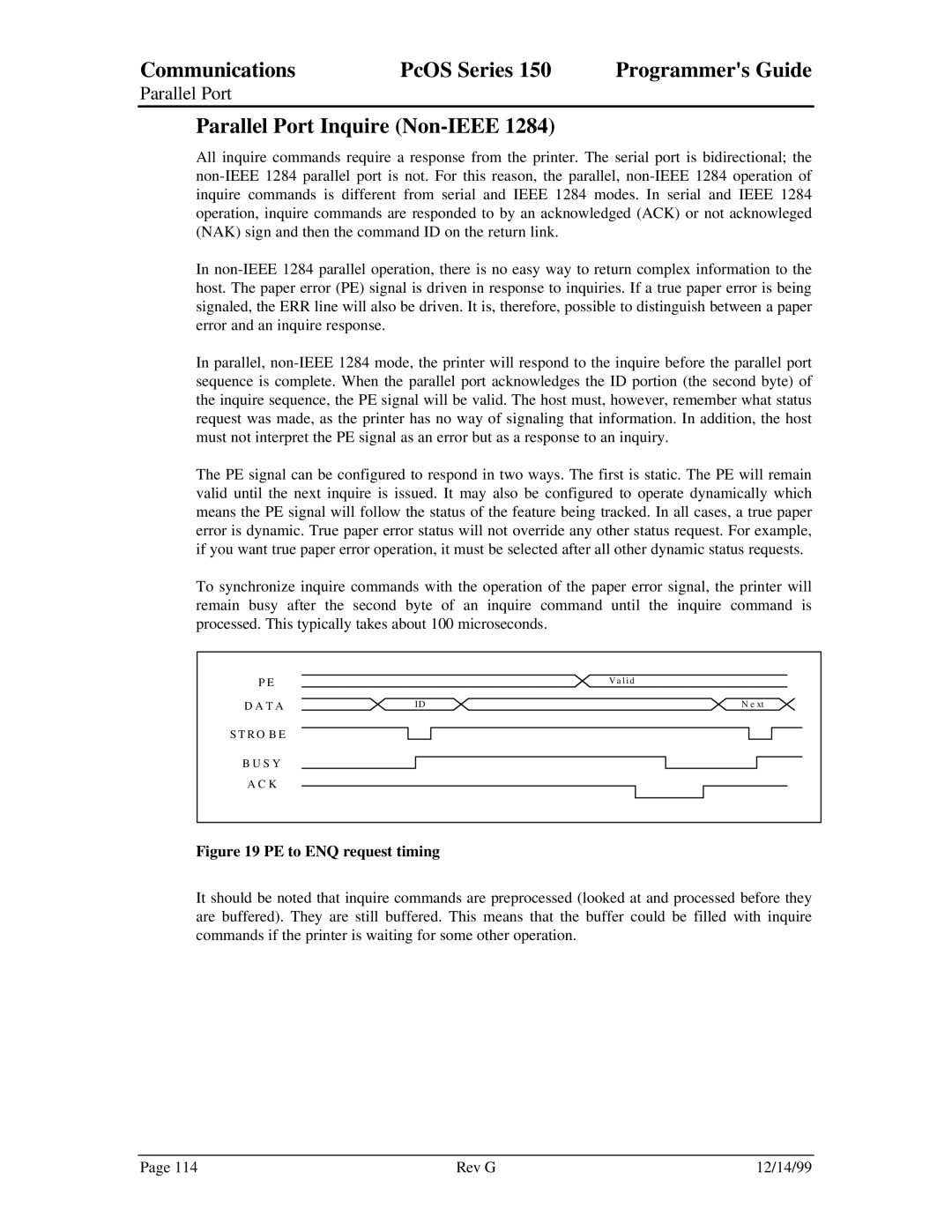
Communications | PcOS Series 150 | Programmer's Guide |
Parallel Port
Parallel Port Inquire (Non-IEEE 1284)
All inquire commands require a response from the printer. The serial port is bidirectional; the
In
In parallel,
The PE signal can be configured to respond in two ways. The first is static. The PE will remain valid until the next inquire is issued. It may also be configured to operate dynamically which means the PE signal will follow the status of the feature being tracked. In all cases, a true paper error is dynamic. True paper error status will not override any other status request. For example, if you want true paper error operation, it must be selected after all other dynamic status requests.
To synchronize inquire commands with the operation of the paper error signal, the printer will remain busy after the second byte of an inquire command until the inquire command is processed. This typically takes about 100 microseconds.
P E |
| V a l i d |
D A T A | ID | N e xt |
S T R O B E |
|
|
B U S Y |
|
|
A C K |
|
|
Figure 19 PE to ENQ request timing
It should be noted that inquire commands are preprocessed (looked at and processed before they are buffered). They are still buffered. This means that the buffer could be filled with inquire commands if the printer is waiting for some other operation.
Page 114 | Rev G | 12/14/99 |
